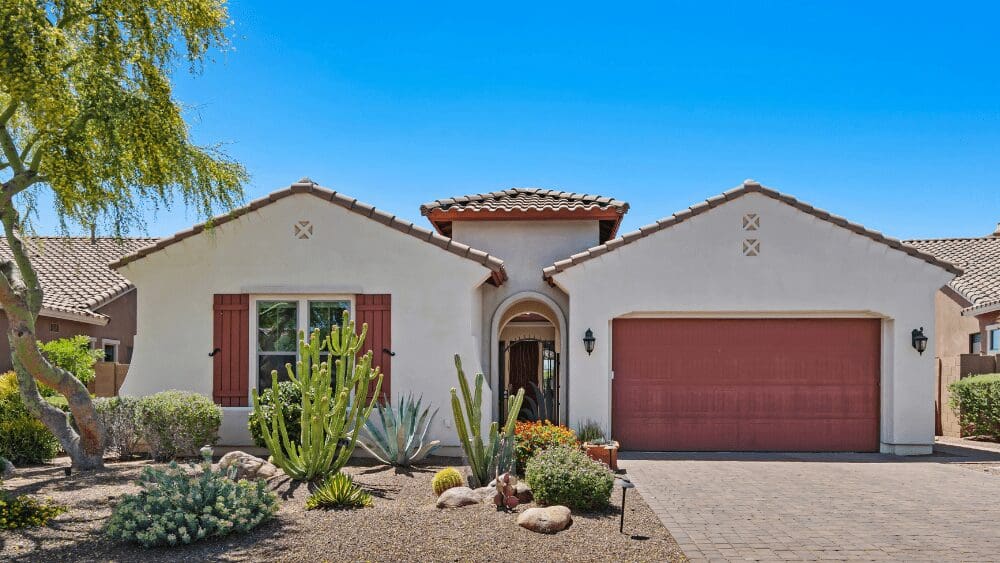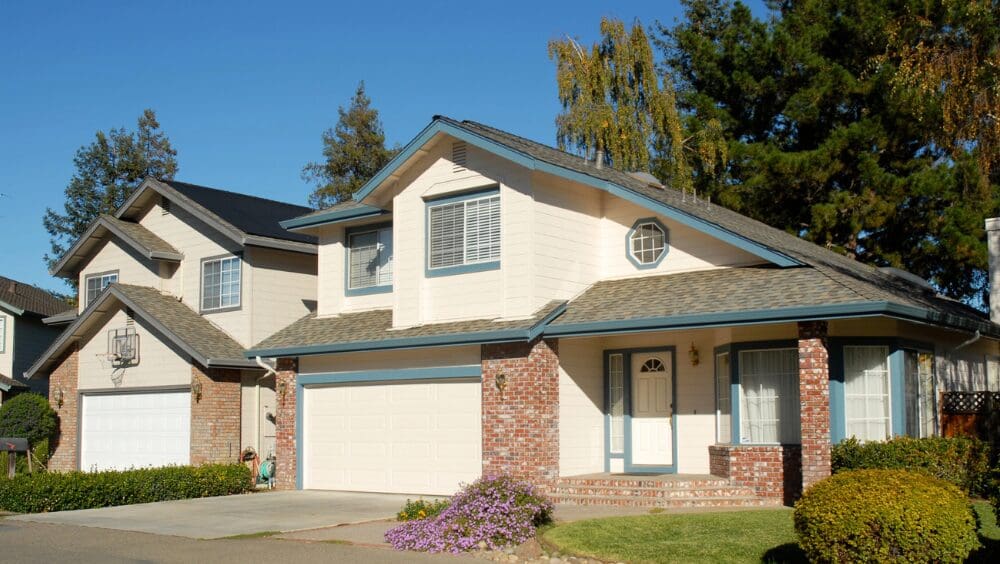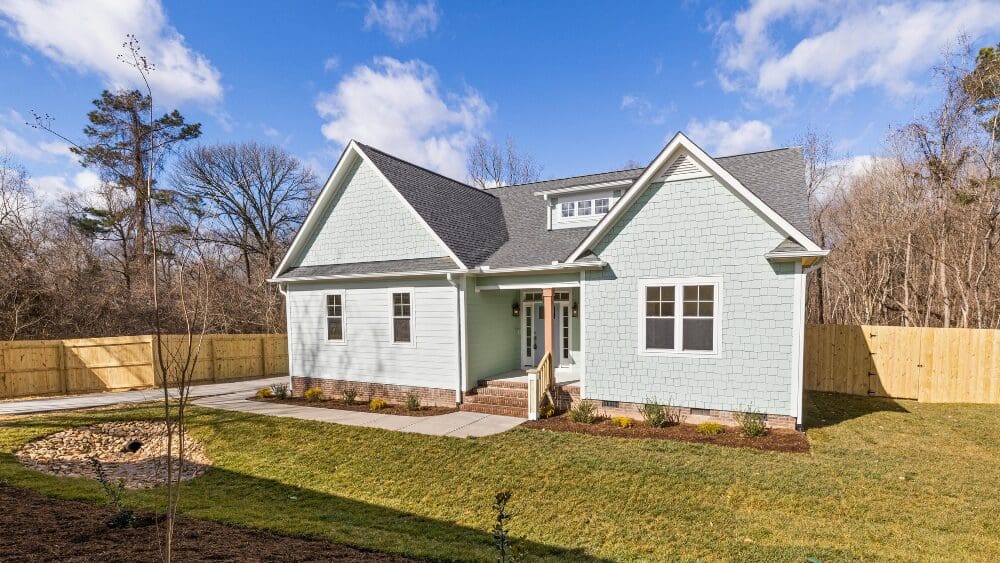
Your house was perfect for you and your family when you bought it — years ago. But you’ve all grown, and now it’s time to find something that’s a better fit. In short, you need to buy a new house while selling your current one. How do you do this? What are your options? Before you begin the process of choosing the best way to buy a house while selling your own, talk to a real estate agent who can explain your options to you. “The most important thing is to make sure you are partnered with someone who knows and understands all of your options,” says Beth Nordaune, a top real estate agent in Rochester, Minnesota. Before you decide how you’ll buy a house while your current house is on the market, a real estate agent can give you a sense for what your house could list for right now and how fast it’s likely to sell. “You need someone who is willing to sit down with you and help navigate what makes the most sense for you,” Nordaune says. You’ll also want to assess your finances. How much equity do you have in your current home? How much cash savings do you have? The biggest challenge you’ll likely face in buying a new home while selling your current one is that you are going to need to come up with a down payment for your new home while your equity and investment is still tied up in your first house. But don’t worry, we’ll show you how to navigate that challenge — read on! The first way to approach buying a house while selling your own is to simply buy a new house before you’ve sold your old house. The danger here is, of course, that you will be responsible for two mortgages and could get stretched or sunk financially if something doesn’t go according to plan. If it’s a hot seller’s market, then you might be able to get away with buying your new house and counting on the market to ensure your current one sells right away. That option can be scary, especially if you don’t feel confident your current home will sell quickly. For this very reason, “buying a second home isn’t as easy as buying your first home,” says Nordaune. But if you’re willing to take a calculated risk, this might be a good option for you. When you buy with a sales contingency, it means that there is a contingency in your offer that states if your current home doesn’t sell by a certain date, you can back out of the purchase contract. “This isn’t preferred,” says Nordaune. “For most sellers, a contingent offer won’t be their first choice.” Still, there are situations when a seller might consider a contingent offer. One is if your agent can explain to the seller’s agent that your current home is likely to sell quickly. In that case, “they may take a chance and accept it,” explains Nordaune — who adds that if the home you want to sell isn’t in a competitive price range “it’s really tough,” to make this option work. Because many sellers use the money they make from selling their home to finance the purchase of their new home, they can often find themselves in a situation where closing dates don’t align, and the money they need from their current home’s equity isn’t quite available yet. That’s where a bridge loan comes in. A bridge loan is a relatively high-interest loan that can be used to fund the down payment on your new house. The loan is then repaid after you sell your current home. “That doesn’t mean the goal is to own two homes for a long time,” says Nordaune, “but a bridge loan allows you to purchase a new home and then go back and market and sell your current home.” Nordaune says that most people who take out a bridge loan put their house on the market as soon as they find a new home to purchase. “Ultimately, they try to line up the closing dates as close as possible,” she explains, in order to reduce the amount of time their bridge loan is open. Keep in mind that in order to qualify for a bridge loan, you need to have a good credit history. A home equity loan is a loan in which the borrower uses the equity in their home as collateral. The loan creates a lien against the borrower’s house — and it reduces the actual equity the homeowner has in their home. “It’s similar to what you are doing with a bridge loan,” explains Nordaune, who says that she doesn’t see buyers who need to sell their current home do this very often. The reason why, she explains, is because “it changes your debt-to-income ratio in such a way that you may not even qualify for another mortgage. I wouldn’t advise someone to do that.” Still, if you have a lot of equity built up in your current house, and especially if you are trading down, buying with a home equity loan or line of credit might be a viable option. Do you need to sell your home to buy a new one? If you live in an area where rent is relatively high compared to sales prices, and you can make it work financially, perhaps you can arrange to rent your house? Renting your house as a vacation home, entering into a rent-to-own scenario, or renting your house the traditional way are all options. Nordaune points out, however, that having a renter in your home isn’t the same from the bank’s perspective as if you’d sold it. “When you talk about debt-to-income ratio, if you have a renter in your home that could help you to qualify for a loan or allow you to buy non-contingent, but that doesn’t mean you don’t have any risk — it still affects you,” she says. “You can’t just say, hey, my mortgage payment is $3,000 a month and I found someone to rent my house for $3,000 a month so we should be good — it’s not a one-for-one, but it does help.” If you want to play it safe, you can always sell your home before buying a new one. When you go this route, you don’t have to worry about the challenges of temporarily financing two homes or buying with a contingency. If you live in an area with a hot buyer’s market, this could be a good option for you. If you sell your house and cross your fingers that you’ll find a new one quickly, you’ll be depending on the market to help you find the right place after your home is sold. But selling your home before buying a new one is not without danger. You might not find a house you like after yours sells — or, if the market is extremely hot, you might not be able to snag a new home right away because all the homes you like get scooped up before you can make an offer. If that happens, you’ll end up having to store your things or deal with some kind of transition state before you can settle into your new home. “A lot of markets are competitive and it’s scary. Buyers are afraid that if they sell their house, they won’t find another and they’ll be homeless,” says Nordaune. You can close on a house in about a month… but you don’t have to. As the seller, you can ask the buyer for a longer closing period, which will give you more time to find a new place to live. While some buyers won’t agree to an extended closing period, others might find it advantageous as well — especially if they’re moving up and also have a home to sell. If you sell your home and can’t find a new one to buy right away, consider asking for a rent-back clause in the sales contract. In this scenario, you’ll be able to rent your home back from the new owner for a period of time after the sale closes — let’s say three months — enabling you extra time to search for a new home while keeping a roof over your head. If you’re looking for a low-risk way to buy a home while selling your current one, check out the HomeLight Trade-In program, part of HomeLight’s Cash Close. The way Cash Close works is like this: First, apply for the program. Once you’re in, HomeLight will make a guaranteed offer on your current house and help you figure out what you can afford to buy next. Next, find a new house and make an offer. When your offer is accepted, HomeLight will buy your current house for the agreed-upon price, so you’ll have the funds you need to close without having to take out a bridge loan or jump through any of the other hoops outlined above. Finally, HomeLight will list and sell your house, then collect any costs and program fees from the home’s sales price. Any upside that remains will be delivered back to you as the original homeowner. It’s easy and worry-free! We know that buying a house while selling your current one can be a challenge, but hopefully there’s an option here that will be a great fit for you. If you’re not sure which would be the best fit for you, a qualified real estate agent can help you figure it out!First: Do your research
Buying before selling
Option 1: Buy a new house and cross your fingers
Option 2: Buy with a sales contingency
Option 3: Buy with a bridge loan
Option 4: Use a home equity loan to buy
Option 5: Consider your alternatives
Selling before buying
Option 6: Sell and cross your fingers
Option 7: Stretch out the closing process
Option 8: Ask for a rent-back clause
Option 9: HomeLight Trade-In



